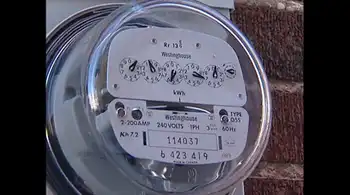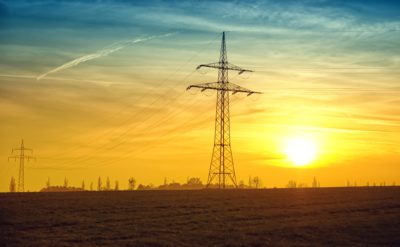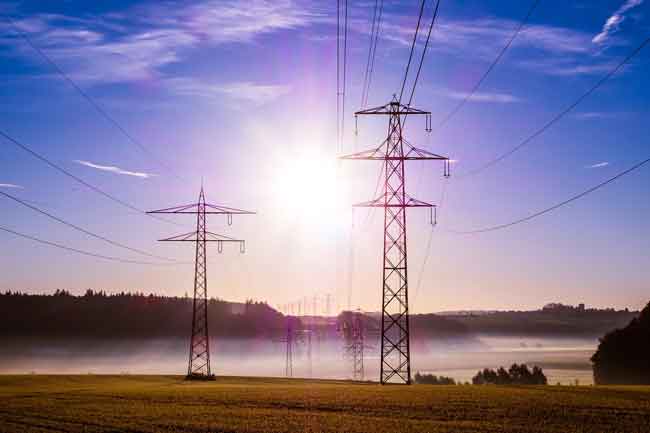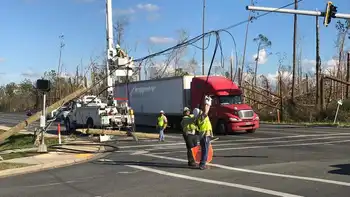Senate may strip consumer breaks in clean-energy bill
By Knight Ridder Tribune
Substation Relay Protection Training
Our customized live online or in‑person group training can be delivered to your staff at your location.

- Live Online
- 12 hours Instructor-led
- Group Training Available
The Senate version eliminates tax incentives such as the $2,000 deduction for the purchase of new hybrid vehicles, or $300 for homeowners who install solar-water heating systems. It also includes new language that puts important carbon-emission protections on the process of converting coal into gas that mitigate the concerns of many environmental groups.
Senate Ways and Means Chairman Steve Panagiotakos said the state simply can't afford the expense of the hybrid tax break, and others, as it prepares to face a particularly lean budget cycle.
"We don't have the money. This is just the beginning of a lot of belt tightening as we go forward," said Panagiotakos, a Lowell Democrat.
"We're stepping into some very precarious financial times, and we need to be very careful on the decisions we make."
The Senate bill also protects the state's Renewable Energy Trust, which funds clean-energy projects with a 25-cent-a-month tax on utility bills. DiMasi, with the support of Gov. Deval Patrick, had proposed stripping the trust from the quasi-public Massachusetts Technology Collaborative and giving the spending authority to the governor's administration because of criticism that the trust had fail d to produce enough clean energy.
Despite the changes made by the Senate, DiMasi spokesman David Guarino said the speaker is encouraged that 85 percent to 90 percent of the bill went unchanged.
"We certainly expect to have a few items of difference and we'll work those out. The important thing is we're all on the same page and pulling in the same direction on this important issue," Guarino said. He said the tax breaks, including the hybrid credit, were important facets of the bill that could affect consumers immediately.
Guarino said that will likely be part of the "robust debate" between the House and Senate.
The Senate will debate and vote on the bill January 9, at which point it will likely go to conference committee to work out the differences between the two branches. "I think we have a product that is very good and will go a long way to making Massachusetts a leader in renewable energy and energy efficiency," Panagiotakos said.
DiMasi's sweeping energy bill encourages communities and homeowners to pursue clean, renewable energy, and mandates that utility companies work to offset increases in energy demand by promoting conservation. It also takes steps to broaden the state's renewable energy portfolio by including hydroelectric power and coal gasification, essentially creating a new market for both types of power to be sold into the electric grid.
Environmental activists were dismayed by the House version of the bill that left the door wide open for providing state incentives for coal gas, which they say would undermine efforts to reduce carbon emissions that contribute to global warming.
Coal gasification is a process by which pulverized coal, heated at extreme high temperatures, can be converted to natural gas. By including coal gas in the state's renewable energy portfolio, revitalization projects like the conversion of a coal plant in Somerset to coal gasification will get a boost.
The Senate's clean-energy bill sets tough standards, however, that mitigate threats to the environment by requiring carbon residue to be captured and sequestered, and capping emissions at the same level set for natural-gas plants. "We'd rather not see any public support going to coal, but the language that came out of Ways and Means is a significant step forward.
That was something we were pushing for," said Shanna Vale, a staff attorney for the Conservation Law Foundation. Vale said scientists have significant doubts that carbon can be properly sequestered in Massachusetts because of the climate - which is done by pumping the carbon back into the ground in areas geologically receptive to absorbing the carbon. Nonetheless, this sends a message that unless coal gasification can be done properly and safely, it shouldn't be done at all, Vale said.
"Overall, this is really a big step forward for Massachusetts. It's really pushing us toward having a clean-energy economy," she said.











